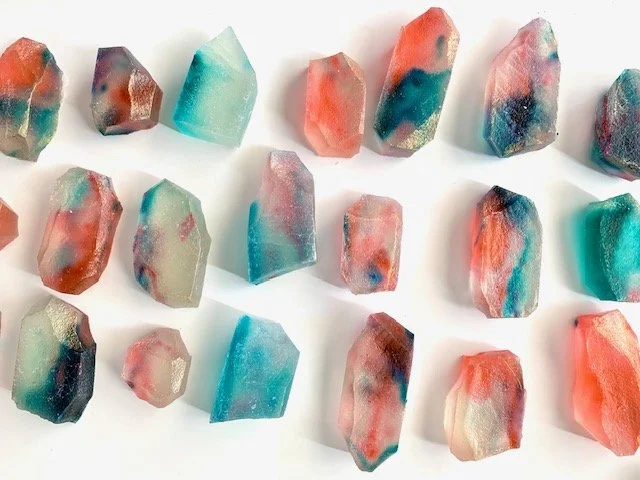Gummies 101: Gelatin, Agar Agar and Pectin Explained
Kohakutou, Japanese Crystal Candy
Agar-Agar, Gelatin, and Pectin Walk into a Candy Shop…
If you've ever dabbled in gummy candy-making, you know that getting the right texture is like playing a high-stakes game of science and chance. And at the heart of it all? The great trio of gelling agents: agar-agar, gelatin, and pectin. They may all turn liquids into wobbly treats, but their personalities—and the candies they create—are wildly different. So let’s break it down.
Gelatin: The Jiggly Champ
Think of gelatin as the life of the party—bouncy, jiggly, and always up for a good time. This protein-based gelling agent, derived from animal collagen, is what gives your gummy bears their iconic chew. Gelatin-based candies are soft, elastic, and have that signature melt-in-your-mouth quality (because gelatin dissolves at body temperature). That’s why eating a gummy worm feels like a weirdly satisfying vanishing act.
Can you substitute it? Well… not easily. Gelatin is unique in its ability to stretch and flex without snapping, so replacing it with, say, agar-agar will turn your chewy gummies into brittle jelly cubes. (Still tasty, but a very different experience.)
Best candy uses: Gummies, marshmallows, Jell-O, and anything that needs a little bounce.
Agar-Agar: The Unflinching Vegan
Agar-agar is gelatin’s plant-based cousin from the sea. Derived from red algae, this powerhouse sets like nobody’s business—firmer and snappier than gelatin, with zero wiggle. If gelatin is a trampoline, agar-agar is a firm mattress.
Here’s the catch: agar-agar sets at a much higher temperature than gelatin, which means you need to boil it before it activates. And once it sets, it’s set. There’s no graceful melt-in-your-mouth moment—it holds its shape like it has something to prove. Ever had a kohakutou (Japanese crystal candy)? That stunningly crunchy shell and jelly-like center? That’s agar-agar doing its thing.
Can you substitute it? If you’re making a vegan-friendly jelly or pudding, sure! But don’t expect a 1:1 replacement for gelatin in chewy candies unless you like the idea of snapping a gummy bear in half like a cracker.
Best candy uses: Fruit jellies, and anything that needs to stay firm at room temperature. I have a really fun guide for Kohakutuo if you want to try a little kitchen project.
Pectin: The Fruit Whisperer
Pectin is the secret weapon of jams, jellies, and fruit-based candies. It’s naturally found in fruit cell walls, which means it plays beautifully with fruit purees. Pectin sets soft but stable—think of it as the polite middle ground between gelatin’s wobble and agar-agar’s unshakable firmness.
Pectin needs sugar and acid to set properly, which is why it thrives in fruit-based confections. Ever bitten into a perfect fruit pate (those fancy French jelly cubes) or a classic orange slice candy? That’s pectin working its magic.
Can you substitute it? Not really. It doesn’t have gelatin’s elasticity or agar-agar’s firmness, so swapping it out will change the texture entirely. But if you’re making a fruit-based candy and want that classic tender chew, pectin is your best friend.
Best candy uses: Fruit pates, jelly candies, and gummy-style fruit treats that don’t need gelatin.
Final Verdict: Who Wins the Candy Battle?
Honestly? It depends on what kind of candy adventure you’re on. Need bouncy gummies? Gelatin’s your guy. Making elegant fruit jellies? Pectin’s got you covered. Want vegan-friendly firm jelly treats? Agar-agar is standing by, slightly judging the others.
So choose your gelling agent wisely—your candy's texture depends on it.
Hey, I’m Kim!
After a lot of practice (and a few sticky disasters), I’ve crafted a delicious selection of lollies and mastered a ton of candy making tips to share with you—lump free. (You’re welcome.)





